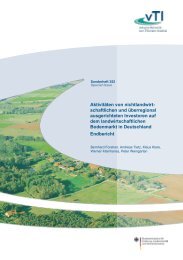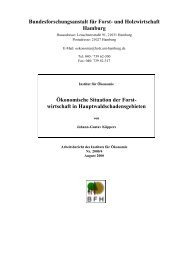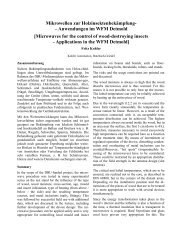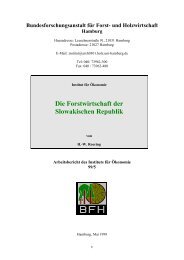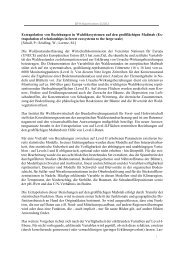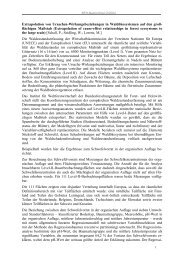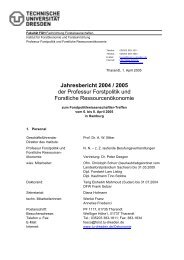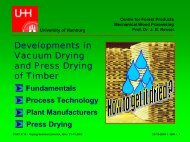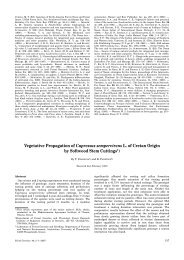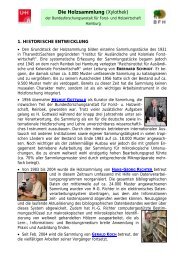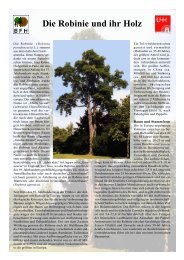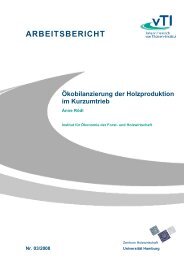STATE OF THE ART REVIEWS
STATE OF THE ART REVIEWS
STATE OF THE ART REVIEWS
You also want an ePaper? Increase the reach of your titles
YUMPU automatically turns print PDFs into web optimized ePapers that Google loves.
COST ACTION E22: Environmental optimisation of wood protection<br />
3. RESEARCH ACTIVITIES BY WORKING GROUPS<br />
Working Group 1: PERFORMANCE<br />
Scope: Traditional wood preservatives, specifying durability requirements, optimum<br />
bio-effective life, creosote, field performance using soil, insects in Europe, climatic<br />
conditions.<br />
Referring to the objectives of this working group we are interesting in:<br />
• traditional wood preservatives and specifying durability requirements (figure 1);<br />
Wood durability plays an important role, so wood protection intend to increase its<br />
durability requirements for the proper utilisation. The natural resistance of the<br />
main species in Romania is presented in figure 2.<br />
• field performance using soil<br />
The stated objectives is in fact the research thematic approached by the Romanian<br />
scientists as part of the COST program, with the title: "Methodological and<br />
experimental research in line with the European norms regarding the testing of<br />
wood in conditions with major biodegradability risk classes 4 and 5 (in permanent<br />
contact with soil and micro-organisms, sea water and marine micro-organisms).<br />
The study objective is a national priority, keeping account of its complex structure,<br />
which responds to several actual and future demands regarding the use of<br />
wood in major degradability risk conditions (in permanent contact with soil, sea<br />
water and their specific microbial agents).<br />
The development stages of the program include:<br />
- the establishment of the appropriate wood testing methodology;<br />
- the identification and selection of the biotic and abiotic factors specific to the<br />
European risk classes 4 and 5 for the temperate Romanian climate and their<br />
utilisation for wood durability testing;<br />
- based on the wood natural durability testing, the identification of the species<br />
suitable for use in high risk conditions;<br />
- the establishment, by laboratory testing (in specified open conditions), of the<br />
utilisation features of solid wood in risk classes 4 and 5 and the improvement<br />
of those features through the application of preservation solutions in view of<br />
increasing its service life;<br />
- the evolution of the ecological impact of the products studied;<br />
- the development of methods, technologies and utilisation instructions.<br />
130



